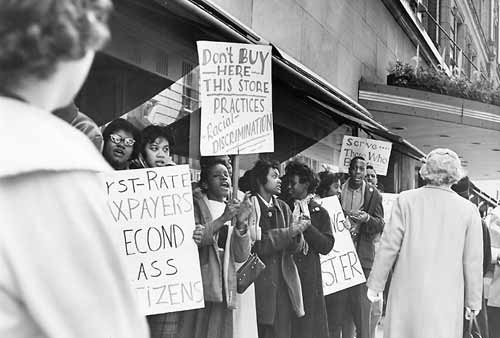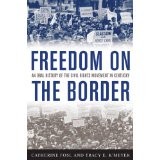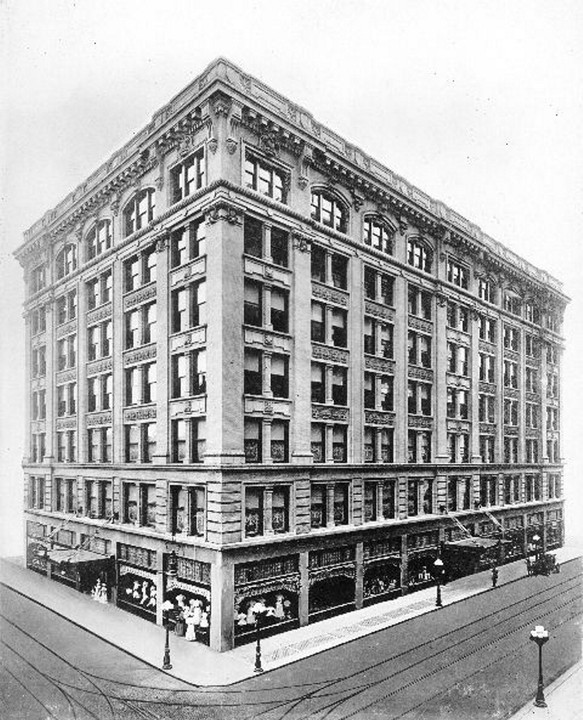Louisville Sit-Ins at Stewart's Dry Goods, 1961
Introduction
Text-to-speech Audio
Some viewed Louisville, KY as a regional leader in race relations in the late 1950s, following the 1956 peace passage of school integration laws. However, in the early 1960s much of the rest of public society still remained segregated. In February 1961, one year following the Greensboro, NC lunch counter sit-ins, the NAACP Youth Council and CORE rallied a massive campaign of peaceful protests, during which over 700 people were incarcerated for their involvement. The movement continued through to the summer when the mayor opened negotiations with city businesses hoping to end the conflict with a compromise that would satisfy African American residents without costing him support among the white majority who believed that African Americans should be "patient" and wait for stores to voluntarily end their Jim Crow policies.
Sit-in demonstrations occurred here at the flagship store of the Stewart's Dry Goods Company Building, a regional department chain that was headquartered in Louisville. This particular protest was led by high school students who occupied space in the store's lunch counter after being denied service because of their race.
Images
"Nothing New For Easter" Campaign, Spring 1961.

Tracy K'Meyer: Freedom on the Border: An Oral History of the Civil Rights Movement in Kentucky-Click on the link below for more information about this book

An early image of the Stewart Dry Goods Co., now home to the Embassy Suites hotel.

Backstory and Context
Text-to-speech Audio
Inspired by the success of the student-led lunch counter sit-ins in Greensboro, NC and Nashville, TN, pockets of disorganized protests began in Louisville in 1960. On February 9, 1961, students working with the local chapter of the Congress of Racial Equality (CORE) began the 1961 sit-in protests at this location. The group chose Stewarts because it was a local company and the most prestigious of all the downtown stores. When the students were arrested, African Americans and a few progressive whites came together to launch a city-wide protest movement against segregation.
Under the leadership of Raoul Cunningham, the NAACP and CORE had united the month prior and the arrest of the student demonstrators here at Stewarts on February 9th led to a growing number of both supporters and opponents. The two civil rights organizations worked together and held sit-ins and stand-in's throughout the entire store and also occupied the nearby Kaufman-Strauss department store. On February 20, the police arrested Cunningham and four teenagers. These numbers soared to over 700 throughout the duration of the campaign.
The campaign grew to include a massive boycott called "Nothing New for Easter," during which the 75,000 African-American citizens of Louisville refused to buy any items from downtown businesses.As more protests continued, both department stores, Kauffman-Strauss and Stewart's, opened negotiations with the protesters. By late April, more civil rights protesters had been arrested in Louisville (nearly 700) than any other city. When these negotiations ended inconclusively, the protests continued until the summer of 1961, when most protests dwindled as the mayor's office got involved in the business negotiations.
Stewarts refused to serve Black customers at their lunch counters until the city intervened. Finally, on May 14, 1963, over two years following the start of the campaign, the Louisville Board of Aldermen passed an ordinance for open accommodations, effectively ending racial segregation at Stewarts and the other city businesses that had held out through the two years of protests. The store closed in 1985.
Under the leadership of Raoul Cunningham, the NAACP and CORE had united the month prior and the arrest of the student demonstrators here at Stewarts on February 9th led to a growing number of both supporters and opponents. The two civil rights organizations worked together and held sit-ins and stand-in's throughout the entire store and also occupied the nearby Kaufman-Strauss department store. On February 20, the police arrested Cunningham and four teenagers. These numbers soared to over 700 throughout the duration of the campaign.
The campaign grew to include a massive boycott called "Nothing New for Easter," during which the 75,000 African-American citizens of Louisville refused to buy any items from downtown businesses.As more protests continued, both department stores, Kauffman-Strauss and Stewart's, opened negotiations with the protesters. By late April, more civil rights protesters had been arrested in Louisville (nearly 700) than any other city. When these negotiations ended inconclusively, the protests continued until the summer of 1961, when most protests dwindled as the mayor's office got involved in the business negotiations.
Stewarts refused to serve Black customers at their lunch counters until the city intervened. Finally, on May 14, 1963, over two years following the start of the campaign, the Louisville Board of Aldermen passed an ordinance for open accommodations, effectively ending racial segregation at Stewarts and the other city businesses that had held out through the two years of protests. The store closed in 1985.
